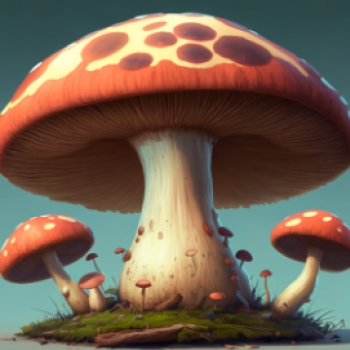400分求有关植物组织培养的英文文献资料
-
Z好是石蒜(其他也可以)组织培养的英文文献资料,没中文翻译也可以,字数在4000字左右的。谢谢了!找了很久没找到!找到了追加300分!... Z好是石蒜(其他也可以)组织培养的英文文献资料,没中文翻译也可以,字数在4000字左右的。 谢谢了! 找了很久没找到!找到了追加300分! 展开
全部评论(4条)
-

- wyh415237 2009-03-21 00:00:00
- The Many Dimensions of Plant Tissue Culture Research R. Daniel Lineberger Professor of Horticulture Texas A&M University College Station, TX 77843 Webmaster of Aggie Horticulture (http://aggie-horticulture.tamu.edu/) INTRODUCTION The practice of plant tissue culture has changed the way some nurserymen approach plant propagation. In the recent past, the applicability of this technology to the propagation of trees and shrubs has been documented. Some firms have established tissue culture facilities and commercial scale operations are presently in operation for the mass propagation of apples, crabapples, rhododendrons, and a few other selected woody species. The intent of this research update is to briefly examine "what is being done" and to explore "what can be done" with regard to the tissue culture of ornamental plants. Such a consideration necessarily includes an overview of tissue culture as a propagation tool. The major impact of plant tissue culture will not be felt in the area of micropropagation, however, but in the area of controlled manipulations of plants at the cellular level in ways which have not been possible prior to the introduction of tissue culture techniques. THE ART AND SCIENCE OF MICROPROPAGATION Of all the terms which have been applied to the process, "micropropagation" is the term which best conveys the message of the tissue culture technique most widely in use today. The prefix "micro" generally refers to the small size of the tissue taken for propagation, but could equally refer to the size of the plants which are produced as a result. Micropropagation allows the production of large numbers of plants from small pieces of the stock plant in relatively short periods of time. Depending on the species in question, the original tissue piece may be taken from shoot tip, leaf, lateral bud, stem or root tissue (Fig. 1). In most cases, the original plant is not destroyed in the process -- a factor of considerable importance to the owner of a rare or unusual plant. Once the plant is placed in tissue culture, proliferation of lateral buds and adventitious shoots (Fig. 2) or the differentiation of shoots directly from callus (Fig. 3), results in tremendous increases in the number of shoots available for rooting. Rooted "microcuttings" or "plantlets" of many species have been established in production situations and have been successfully grown on either in containers or in field plantings. The two most important lessons learned from these trials are that this methodology is a means of accelerated asexual propagation and that plants produced by these techniques respond similarly to any own-rooted vegetatively propagated plant. Micropropagation offers several distinct advantages not possible with conventional propagation techniques. A single explant can be multiplied into several thousand plants in less than one year. With most species, the taking of the original tissue explant does not destroy the parent plant. Once established, actively dividing cultures are a continuous source of microcuttings which can result in plant production under greenhouse conditions without seasonal interruption. Using methods of micropropagation, the nurseryman can rapidly introduce selected superior clones of ornamental plants in sufficient quantities to have an impact on the landscape plant market. PLANT IMPROVEMENT THROUGH TISSUE CULTURE In introducing this research update, it was mentioned that the major impact of tissue culture technology would not be in the area of micropropagation, but rather in the area of controlled manipulations of plant germplasm at the cellular level. The ability to unorganize, rearrange, and reorganize the constituents of higher plants has been demonstrated with a few model systems to date, but such basic research is already being conducted on ornamental trees and shrubs with the intent of obtaining new and better landscape plants. SELECTION OF PLANTS WITH ENHANCED STRESS OR PEST RESISTANCE Perhaps the most heavily researched area of tissue culture today is the concept of selecting disease, insect, or stress resistant plants through tissue culture. Just as significant gains in the adaptability of many species have been obtained by selecting and propagating superior individuals, so the search for these superior individuals can be tremendously accelerated using in vitro systems. Such systems can attempt to exploit the natural variability known to occur in plants or variability can be induced by chemical or physical agents known to cause mutations. All who are familiar with bud sports, variegated foliage and other types of chimeras have an appreciation for the natural variability in the genetic makeup or expression in plants. Chimeras are the altered cellular expressions which are visible, but for each of these which are observed many more differences probably exist but are masked by the overall organization of the plant as a whole. For example, even in frost-tender species, certain cells or groups of cells may be frost hardy. However, because most of the organism is killed by frost, the tolerant cells eventually die because they are unable to support themselves without the remainder of the organized plant. Plant tissues grown in vitro can be released from the organization of the whole plant through callus formation. If these groups of cells are then subjected to a selection agent such as freezing, then those tolerant ones can survive while all those which are susceptible will be killed. This concept can be applied to many types of stress as well as resistance to fungal and bacterial pathogens and various types of phytotoxic chemical agents. The goal of selecting such resistant cell lines would be to reorganize whole plants from them which would retain the selected resistance (Fig. 4). Current research in this area extends across many interests including attempts to select salt tolerant lines of tomato, freezing resistant tobacco plants, herbicide resistant agronomic crops, and various species of plants with enhanced pathogen resistance. Imagine, if you will, the impact of a fireblight-resistant Bartlett pear, a clone of pin oak for alkaline soils, or a selection of southern magnolia hardy to zone 4! TISSUE CULTURE AND PATHOGEN FREE PLANTS Another purpose for which plant tissue culture is uniquely suited is in the obtaining, maintaining, and mass propagating of specific pathogen-free plants. The concept behind indexing plants free of pests is closely allied to the concept of using tissue culture as a selection system. Plant tissues known to be free of the pathogen under consideration (viral, bacterial, or fungal) are physically selected as the explant for tissue culture. In most cases, the apical domes of rapidly elongating shoot tips are chosen (Fig. 5). These are allowed to enlarge and proliferate under the sterile conditions of in vitro culture (Fig. 6) with the resulting plantlets tested for presence of the pathogen (a procedure called indexing). Cultures which reveal the presence of the pathogen are destroyed, while those which are indexed free of pathogen are maintained as a stock of pathogen-free material. Procedures similar to these have been used successfully to obtain virus-free plants of a number of species and bacteria-free plants of species known to have certain leaf spot diseases. The impact of obtaining pathogen-free nursery stock can only be speculative, since little research documenting viral, bacterial, or fungal diseases transmitted through propagation of woody ornamentals is available. SOMATIC HYBRIDIZATION The ability to fuse plant cells from species which may be incompatible as sexual crosses and the ability of plant cells to take up and incorporate foreign genetic codes extend the realm of plant modifications through tissue culture to the limits of the imagination. Most such manipulations are carried out using plant "protoplasts". Protoplasts are single cells which have been stripped of their cell walls by enzymatic treatment. A single leaf treated under these conditions may yield tens of millions of single cells, each theoretically capable of eventually producing a whole plant. This concept has fueled speculation as diverse as the possibilities of obtaining nitrogen-fixing corn plants on the one extreme to discovering a yellow-flowered African violet on the other extreme. The observation that has provided the impetus for most of this research is that when cells are stripped of their cell walls and brought into close contact, they tend to fuse with each other (Fig. 7). This "somatic hybridization" is not subject to the same incompatibility problems that limit traditional plant breeding strategies. It is conceivable then that one could hybridize a Juneberry with a crabapple or a plum, but the fundamental research required to demonstrate such an event has yet to be conducted. The potential use of somatic hybridization to bring about novel combinations of genetic material has been demonstrated in the genera Petunia and Nicotiana. Research funded in part by the Horticultural Research Institute at the University of Wisconsin is investigating the feasibility of using such techniques with woody species. Brent McGown and co-workers have succeeded in obtaining naked cells from tissue cultures of Betula and Rhododendron, but as of yet, they have neither obtained plants from single cells not achieved cellular fusion. However, further research in this area promises to have a tremendous impact on our concepts of woody plant diversity. Just as remarkable as the idea of fusing plant protoplasts is the idea of incorporating foreign genetic material into the genetic code of plant cells. Such transformations have been carried out in the so-called "gene-splicing" experiments where the information for making insulin was incorporated into bacteria. Not only is the desired information transmitted to succeeding generations of bacteria, but the bacterial cultures become synthesizers of insulin as well. Plant cells can be made to take up foreign genetic codes, but evidence that this can be transmitted into the daughter cells and serve the intended function is lacking. What if, for example, the genetic information for accumulating a very high sugar content is incorporated into a clone of sugar maples? One could think of enough what if誷 in this category to fill several volumes! SUMMARY Plant tissue culture research is multi-dimensional. While most nurserymen have been introduced to the techniques and advantages of micropropagation, few have ventured to use it as a propagation tool. The applicability of micropropagation for woody trees has been demonstrated as feasible since all aspects of the technology have confirmed the fact that trees produced by this method look like and grow like their counterparts produced by traditional methods of cloning. Other dimensions of tissue culture research have been less well publicized. The potential for selecting pathogen free plants, for selecting stress-tolerant and pathogen-resistant clones of plants, and the novel genetic combinations to be achieved through somatic hybridization are all lines of research which can have a profound impact on the nursery industry.
-
 赞(4)
赞(4) 回复(0)
回复(0)
-

- 准备回家了吧 2009-03-21 00:00:00
- 以下是:"无性繁殖黄花石蒜的组织培养"的英文文献. Clonal multiplication of Lycoris aurea by tissue culture This article is not included in your organization's subscription. However, you may be able to access this article under your organization's agreement with Elsevier. Li-Chun Huanga and Din-Ming Liua aInstitute of Botany, Academia Sinica Nankang, Taipei, Taiwan Accepted 28 December 1988. Available online 14 October 2003. Abstract A method has been developed for clonal propagation of Lycoris by starting with explants composed of pairs of bulb-scale segments, each 4 × 5 mm, joined basally by a 1-mm strip of stem plate. They were induced to undergo organogenesis by placement in darkness on a medium supplemented with 30 mg l?1 each of NAA and BA for the first 3 months. The swollen explants were then transferred to a second medium with 3 mg l?1 NAA and 10 mg l?1 BA and given illumination for differentiation of adventitious buds and emergence of shoots. The shoots were multiplied by transferring groups of 3 or more to fresh medium at 4-week intervals. To obtain plants, individual shoots were rooted in another medium with 3 mg l?1 NAA. The method is projected to yield at least 30 000 plants per bulb the first year. Keywords: bulb-scale; flower; Lycoris aurea; micropropagation; shoot tip; spider lily
-
 赞(13)
赞(13) 回复(0)
回复(0)
-

- 空中有牛 2009-03-20 00:00:00
- 找错地方了 这种东西是要到专门学术网站上去下载的 而且基本都是付费的 万方应该是Z好的了 期刊,论文都有
-
 赞(10)
赞(10) 回复(0)
回复(0)
-

- _少輕狂—— 2009-03-20 00:00:00
- 要PDF的话找我,我正在帮你找,好辛苦,你也搞论文吗? Clonal multiplication of Lycoris aurea by tissue culture 无性繁殖黄花石蒜的组织培养 This article is not included in your organization's subscription. However, you may be able to access this article under your organization's agreement with Elsevier. Li-Chun Huanga and Din-Ming Liua aInstitute of Botany, Academia Sinica Nankang, Taipei, Taiwan Accepted 28 December 1988. Available online 14 October 2003. Abstract A method has been developed for clonal propagation of Lycoris by starting with explants composed of pairs of bulb-scale segments, each 4 × 5 mm, joined basally by a 1-mm strip of stem plate. They were induced to undergo organogenesis by placement in darkness on a medium supplemented with 30 mg l?1 each of NAA and BA for the first 3 months. The swollen explants were then transferred to a second medium with 3 mg l?1 NAA and 10 mg l?1 BA and given illumination for differentiation of adventitious buds and emergence of shoots. The shoots were multiplied by transferring groups of 3 or more to fresh medium at 4-week intervals. To obtain plants, individual shoots were rooted in another medium with 3 mg l?1 NAA. The method is projected to yield at least 30 000 plants per bulb the first year. Keywords: bulb-scale; flower; Lycoris aurea; micropropagation; shoot tip; spider lily
-
 赞(7)
赞(7) 回复(0)
回复(0)
热门问答
- 400分求有关植物组织培养的英文文献资料
- Z好是石蒜(其他也可以)组织培养的英文文献资料,没中文翻译也可以,字数在4000字左右的。谢谢了!找了很久没找到!找到了追加300分!... Z好是石蒜(其他也可以)组织培养的英文文献资料,没中文翻译也可以,字数在4000字左右的。 谢谢了! 找了很久没找到!找到了追加300分! 展开
2009-03-19 11:29:07
458
4
- 求骗有关纳米材料的英文文章
2010-12-26 10:43:24
373
1
- 高分请高手帮忙翻译英文文献资料(4)
- Whenliquidisheateditevaporates.Theevaporationprocessisdependentonpressure,temperatureandcompositionoftheliquidandgas.Gascanalsocondense.Inadditionthereisaconvectiveheattr... When liquid is heated it evaporates. The evaporation process is dependent on pressure, temperature and composition of the liquid and gas. Gas can also condense. In addition there is a convective heat transfer between the liquid and gas zone that must be considered. The surfaces in the gas zone also radiates from the shell to the liquid. During the blowdown process mass is usually evacuated from the gas zone, but also liquid might be released. The rate of release is dependent on density and pressure as well as the release area. As pressure and temperature change, the properties of all materials change. This has to be considered in a prediction of a blowdown process. The main purpose of a blowdown process is as earlier stated to maintain integrity of the equipment. The strength properties of the shell are the key factor on that matter. The strength is dependent on the inside pressure as well as the support forces. If the exposing forces produce stress that exceeds the ultimate tensile stress (UTS) in some regions, the integrity of the equipment is no longer maintained. In the design phase of a process plant, these aspects are crucial and must be included as a dimensional factor. For that reason prediction of the blowdown process is essential. Lately some new standards has been introduced to the industry on this matter [3] and [4]. VessFire [1] and [2] is a multi physics system designed for calculation of this kind of problems. It has been applied for some time in the oil and process industry on many projects. The system satisfies the requirements for predictions outlined in [3] and [4]. It includes all aspects described above including integrity of the shell. As part of the verification process some experiments where performed. Some of the experiments are presented here. EXPERIMENTAL STUDY The purpose of the experiments was to investigate the evaporation process and the heat transfer to the liquid and vapour. In a complex system it is important to reduce unknown parameters as far as possible. Exposure from a flame is difficult to control. Flux measurements are point values and not necessarily representative for the average exposure. In order to control the heat exposure it was decided to apply an electric heating system. The system and the verification of the system is described in [5], [6] and [8]. The furnace was built inside a supporting tube. Figure 2 shows a general arrangement of the experimental outfit. A 0.05 mm stainless steel foil formed as a tube, 300 mm in diameter, generated the heat. The power supply was based on a 3-phase alternating current system giving 48 Volt output as maximum. The top exposure had a limit of 300 kW. The foil had a surface of about 1 m2, giving a heat flux up to 300 kW/m2. The power input could be continuously regulated from zero to maximum load. Each experiment was started from zero and brought up to the required load within a few seconds. After that the surface temperature of the heating foil was kept constant during the exposure period. Experiments with both dry objects as well as water filled object were performed. In this paper only water filled experiments are presented Figure 2 General arrangements drawing of the experimental furnace including the specimen and its support Figure 3 Illustration of the heating unit. The black part is copper conductors for the foil. The grey part is the heating foil exposing the specimen. The foil is equipped with thermo-elements all marked H, except H5 which is the temperature in a copper ring and H6 which is the temperature between the insulation and the supporting tube. 展开
2009-03-12 04:13:30
489
6
- 植物组织培养的英文怎么说
2016-11-20 02:04:02
266
1
- 求与牛奶品质检测有关的英文资料一篇
- 要求英文单词数目3000以上,并且要有中文翻译对照... 要求英文单词数目3000以上,并且要有中文翻译对照 展开
2018-12-12 19:58:05
287
0
- 想找个植物组织培养方面的英文期刊投稿?求推荐!
- 就是国外英文期刊,植物组织培养方面能投,不要求sci什么的,希望审稿周期比较快,且比较正规。只要是英文期刊就行,哪位达人曾经研究过,可否提供一二,多谢多谢!... 就是国外英文期刊,植物组织培养方面能投,不要求sci什么的,希望审稿周期比较快,且比较正规。只要是英文期刊就行,哪位达人曾经研究过,可否提供一二,多谢多谢! 展开
2013-02-12 16:58:33
338
1
- 黄酒文化的文献资料
2018-11-28 13:14:05
245
0
- 急求英文高手翻译一段摘要 有关夹具设计的
- Abstract In this paper, the general situation of research on agile fixture design is summarized and the achievements and deficiencies in the field of case-based fixture design are pointed out. There are no correlative case bases and match... Abstract In this paper, the general situation of research on agile fixture design is summarized and the achievements and deficiencies in the field of case-based fixture design are pointed out. There are no correlative case bases and matching mechanisms during the period from establishing the fixture planning to designing the fixture in currently used case-based fixture design systems. Thus a great amount of experience of fixture design is wasted and cannot be re-used, which reduces design efficiency and violates the original intention of case-based reasoning methods. In order to realize agility of fixture design, including re-configurability, re-scalability and re-usability, in this paper, a re-configurable agile fixture element base and an element assembly relation base are established. Using these two bases, the fixture structure is function-based decomposed, which makes it easy for an agile fixture to be re-configured and modified. Furthermore, a whole case-based agile fixture design model is presented, in which three modules are introduced, including the evaluation of the similarity of fixture planning, conflict arbitration and the modification of an agile fixture case. The three modules can be used to solve a problem where experience and design results cannot be re-used in the process of fixture design. Against the agile fixture design model, the evaluation method is put forward to evaluate the similarity in various phases. However, a similar case in the base could not generally meet the actual requirement and resolve the conflict between the similar case and the actual condition. Thus three methods, including a local restriction-relaxed method, a function-based conflict arbitration method and a case-based conflict arbitration method, are presented to clear up the conflict and could be used to modify the case to obtain an approach to a design result. Finally, an agile fixture design example is presented. The result demonstrates that the case-based agile fixture design approach can improve re-usability and design efficiency. Keywords: Agile fixture design; Case-based reasoning; Modeling 展开
2009-05-07 02:47:12
407
1
- 关于植物组织培养的英文原著有哪几本?在哪能买到?求
2013-01-03 17:20:31
307
2
- 急!求一篇有关植物组织培养的文章,一千字左右,谢谢各位了!
2018-12-02 06:33:07
317
0
- 有关动物组织培养和植物组织培养
- 1、从细胞悬液或细胞中可提取蛋白质等制品,如病毒疫苗、干扰素等。这个的具体操作是什么?是培养可以分泌干扰素的淋巴细胞吗?2、愈伤组织可生产生细胞产品,如药物、色素、香料、食... 1、从细胞悬液或细胞中可提取蛋白质等制品,如病毒疫苗、干扰素等 。 这个的具体操作是什么?是培养可以分泌干扰素的淋巴细胞吗? 2、愈伤组织可生产生细胞产品,如药物、色素、香料、食品添加剂、杀虫剂。这个又到底是什么?有什么具体例子吗? 展开
2009-10-05 17:04:06
357
2
- 有关植物组织培养的专业有哪些?急!!!
2014-06-19 04:30:46
375
2
- 谁能帮我找到有关植物组织培养的书!
- 谁能帮我找到有关植物组织培养方面的书,要英文版的.Z好能有中英文对照的.或者林业专业中英文专业词典(要包括组培方面的).谢谢.... 谁能帮我找到有关植物组织培养方面的书,要英文版的.Z好能有中英文对照的.或者林业专业中英文专业词典(要包括组培方面的).谢谢. 展开
2012-05-12 13:48:13
284
1
- 100分求有关食品保险或者真空预冷或者冷库的英文文献
- 如题 求关于这些方面的的英文文献 能能涉及其中一项就可以 如果能有中文翻译那就更好了
2009-01-10 12:47:31
406
4
- 关于smt电子厂十个有关英文
- 关于smt电子厂十个有关英文... 关于smt电子厂十个有关英文 展开
2017-07-30 17:17:29
644
1
- 有关植物组织培养的传代与细胞的退化
- 利用植物的根尖进行组织培养,可以大量快捷的培养所需的植株,是细胞工程的一个很有价值的技术,利用了植物的全能性,书上讲,但是用植物的普通体细胞进行组织培养在多次传代后会出现... 利用植物的根尖进行组织培养,可以大量快捷的培养所需的植株,是细胞工程的一个很有价值的技术,利用了植物的全能性,书上讲,但是用植物的普通体细胞进行组织培养在多次传代后会出现退化,这种退化是怎么回事? 但是利用无病毒根尖与茎尖则可很好的避免着一问题,那么就可以传下去很多代,这与癌细胞的无限传代有和异同?? 展开
2007-01-25 09:49:59
517
2
- 求英文论文一篇
- 要5000词左右,注明出处(杂志名,多少期,Z好可查),不要从书中摘录的。关于网络方面的。(软件。。不要硬件的)。。有翻译更好,没有也行。谢谢大家帮帮忙。
2009-04-12 18:26:09
244
1
- 求翻译成英文,非常感谢!
- 防尘测试:在砂尘<75μm砂尘箱中,灰尘浓度为:5g/m3,空气流速为10m/s, 试验持续8小时。机器内部无砂尘进入。防水测试:样品被放置在淋雨试验箱转台上内。向其喷洒温度20℃的水。每... 防尘测试:在砂尘<75μm砂尘箱中,灰尘浓度为:5g/m3,空气流速为10m/s, 试验持续8小时。机器内部无砂尘进入。 防水测试:样品被放置在淋雨试验箱转台上内。向其喷洒温度20℃的水。每个面喷洒10min。机器正常工作。 跌落测试:机器6个面分别150cm高度跌落在水泥地面。4个循环无故障。 液晶屏耐磨:推拉力计垂直按压于屏表面,压力2.4N,在3cm直线距离来回摩 擦10000次。手写输入,触笔沿摩擦处划直线,歪斜率不超过15%。 按键寿命:下压重量为400-500g,按压100万次按键无破损现象,按键功能正常。 振动测试:扫频耐久试验、定频耐久试验、高频扫频耐久试验、高频定频耐久试验以后机器无故障。 温度测试:工作温度为-10℃,55℃、贮存温度为-20℃,60℃、恒定湿热试验 环境温度55℃,相对湿度93%、温度变化试验机器无故障。 移动终端事业部致力于研发、生产和销售民族品牌的嵌入式信息终端,经过多年不懈地努力,自有品牌手持终端产品大批量销往国内、国际市场。 金融与通信事业部致力于研发、生产和销售金融类产品,产品占据了国内相当大分额的市场。 SOC事业部致力于研发、设计集成电路产品,实现具有自己知识产权的集成电路。 说明:以上组合为Z大兼容,只能裁减,不能增加;竖排并列为可以二选一。 售前服务 提供快速、详细、周到的技术咨询,技术开发支持。 具备完善的软件开发工具、硬件开发手册、文档说明和培训支持。 售后服务 提供快速优质的升级、维护、维修服务,一般不超过三个工作日,并且可以提供及时的备机服务,特殊约定的除外。 提供更长的保修服务,并且定期的回访和维护服务。 本地化服务价格优势维修费用低。 实时对装备进行“体验”、准确及时地保障工作,确保了装备保障工作人员全面、实时、直观地了解装备的技术状况、消耗态势和故障情况,并据此部署维护保养力量,排查安全隐患. 立体仓库,数据采集比较困难,工作强度高 解决方案:零部件及包装箱贴上条码标签,使用AUTOID产品,读取条码,利用高级WIFI传输到管理系统 好处:提高工作效率,形成快速、GX的物流环节 节约纸张成本 数据可靠性强,出错率近乎为零 实现科学出入库,提高综合管理水平 展开
2011-02-28 05:16:20
602
1
- 求翻译英文文献
- 2.2. Material Characterizations. A field emission scanning electron microscope (SEM, JEOL 6701F) was used to investigate the morphologies, particle sizes of the samples. Transmission electron microscopy and elemental compositions of the ... 2.2. Material Characterizations. A field emission scanning electron microscope (SEM, JEOL 6701F) was used to investigate the morphologies, particle sizes of the samples. Transmission electron microscopy and elemental compositions of the samples were determined by JEM-2100F (JEOL) coupled with an energy-dispersive X-ray spectroscopy (EDX, Phoenix) system. Wide-angle and low-angle X-ray powder diffraction (XRD) of the as-obtained samples were recorded on a Rigaku D/max-2500 with Cu Kα radiation (λ = 1.540 56 Å) operated at 40 kV and 200 mA. Raman measurements were performed using a DXR from Thermo Scientific with a laser wavelength of 532 nm. To calculate the pore size distribution and pore volumes, the nitrogen absorption and desorption isotherms were measured at 77.3 K with an Autosorb-1 specific surface area analyzer from Quantachrome. The content of N in N-doped porous carbon was determined by NHC elemental analysis using Flash EA 1112. Thermogravimetric (TG) analysis of S/C composite was performed on TG/DTA 6300 in an N2 flow to obtain the S content in the composite. A four-contact method was applied to measure the powder electronic conductivity of porous carbons. The powder sample was pressed to disk at 4 MPa with two stainless-steel plungers, whose resistance was measured by a Keithley 2400 digital multimeter in fourwire mode. The conductivity of the sample was calculated according to the resistance and the size of the disk. Information of the surface elements was obtained by X-ray photoelectron spectroscopy (XPS) performed on the Thermo Scientific ESCALab 250Xi using 200 W monochromatic Al Kα radiation. The 500 μm X-ray spot was used for XPS analysis. The base pressure in the analysis chamber was about 3 × 10−10 mbar. All reported data of XPS binding energy are calibrated based on the hydrocarbon C 1s line at 284.8 eV from adventitious carbon. Spectra were fitted with Lorentzian−Gaussian functions and smart background using Thermo Avantage software. 展开
2014-12-28 15:14:51
505
1
- 有关植物组织培养过程中愈伤组织的问题
- 在植物组织培养形成愈伤组织的过程中,好像要进行光照,请问这是为什么,愈伤组织可以进行光合作用吗?另外请给出详细的植物组织培养的培养基的成分,谢谢。... 在植物组织培养形成愈伤组织的过程中,好像要进行光照,请问这是为什么,愈伤组织可以进行光合作用吗?另外请给出详细的植物组织培养的培养基的成分,谢谢。 展开
2009-02-15 03:51:07
588
6
4月突出贡献榜
推荐主页
最新话题















参与评论
登录后参与评论